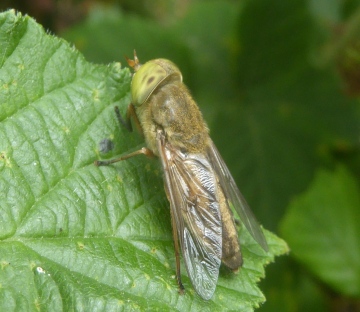Species Account for Atylotus latistriatus
Atylotus latistriatus Brauer, 1880
Diptera: Larger Brachycera: Tabanidae

Reproduction for study and non-profit use permitted, all other rights reserved.
Taxonomic group: soldier flies and allies (Diptera: Larger Brachycera) - County data
View time series maps for Atylotus latistriatus
member log-on for taxon report
Status: NS
Essex RDB: Listed
Threat: Regionally Important
Images
upload a new image
Essex Red Data List comment
Rare coastal species associated with Limonium-dominated saltmarsh.
Species text
This horsefly is sparsely recorded from coastal areas of southern England with records predominating in East Anglia and the Poole Harbour, Solent area. There are only about 15 known post 1960 sites within Hampshire, Kent, Essex and Norfolk and many of its old haunts are now either destroyed or unsuitable and its Essex populations are under particular threat from rising sea levels (Falk 1991a). The species occurs on saltmarsh and some shores with spits or bars of sand forming sheltered lagoons. It has been reared from a larva obtained in a core sample from Limonium saltmarsh in Essex and in Brittany, France the larvae have also been obtained from sand and seaweed at the drift line of shores. The normal breeding site may therefore be in saltmarsh or under seaweed and other drift material on the strand line where there is abundant and concentrated supply of food for the carnivorous larvae. Such drift-line debris may be found on sandy strands that occur locally at the landward margin of saltmarsh in sheltered lagoons, or it may accumulate directly on high saltmarsh (Stubbs & Drake 2001). Females have been observed sucking the blood of sheep and attacking humans, and both sexes feed on the flowers of sea lavender. References
Habitats
Recorded management for locations with Atylotus latistriatus
Recorded substrate and hydrology for locations with Atylotus latistriatus
Why not join the Club, register and add a new species page
Interpretation of distribution maps




















